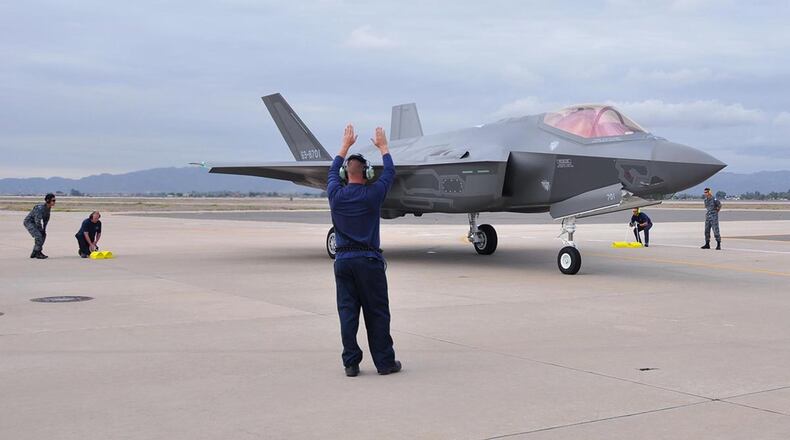If country X has a surplus of C-130 landing gear or if they no longer have a need for certain aircraft parts, the country can place it online for foreign buyers to purchase. Once the part is purchased it is shipped to the WWRS located in greater Dayton to be inspected and shipped to the buyer. WWRS is also responsible for validating the country is authorized to have the item.
Through the warehouse, anonymity is protected so that no one knows what country they are buying from or what country they are selling to, said Angela Swain, chief of AFSAC’s International Logistics Branch, which manages the WWRS.
This is beneficial in part because it takes politics off the table and allows countries to focus on getting the best price for the parts they are buying or selling.
Often many of the parts sold through the warehouse are from aircraft the U.S. Air Force no longer flies but are still in the inventories of certain foreign partners, such as the C-47, A-37, T-33, T-37, F-4 and B-707.
Parts for these aircraft are not always readily available and the only option for getting replacements is to buy them from countries that still operate the aircraft, which is where the warehouse is able to help.
The benefit of the program is that not only does it save countries money by allowing them to buy hard-to-find parts, which are essential to maintaining their aircraft, but the program also saves money by giving countries a cost effective option to get rid of parts.
“In the end, these are items that they (foreign countries) can’t just put in the trash can,” said Swain. “It costs money to demilitarize the items, where it’s usually more economical for them to sell. If they sell they are going to make money and if they demilitarize they are just ‘eating’ the money.”
The WWRS has a unique mission that serves many nations and is utilized by the U.S. Army and U.S. Navy’s Foreign Military Sales program.
Without the platform provided by WWRS, many foreign allies would struggle to keep aircraft in their fleet operational and in the air.
“All of the feedback I’ve received about WWRS has been positive,” said Julie Gammell, WWRS program manager. “Our foreign partners love this program. They don’t have any other outlet to go to a lot of times for these parts and these programs came through for them when they needed a crucial part. Besides that they can sell the parts that are taking up their warehouse spaces and use the money for other requirements in the future. So it’s a win-win for them.”
About the Author
